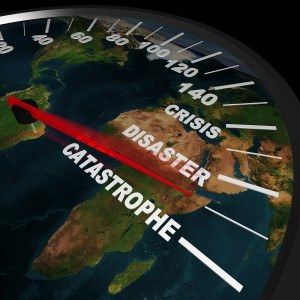 The aftermath of Hurricane Michael and other catastrophes this fall gives insurers a chance to show that they care about more than just numbers, W.R. Berkley’s president and CEO said.
The aftermath of Hurricane Michael and other catastrophes this fall gives insurers a chance to show that they care about more than just numbers, W.R. Berkley’s president and CEO said.
“Hopefully this does provide us an opportunity for the industry to demonstrate the value it brings to society in helping people get back on [their] feet in affected areas,” W. Robert Berkley Jr. said during the company’s Oct. 23, Q3 2018 earnings call.
Berkley’s catastrophe losses for the quarter were $39 million, versus $119 million over the same period in 2017, when insurers and their customers dealt with hurricanes and other weather events that broke new records.
Berkley, in his remarks during the call, noted that the catastrophe activity isn’t as severe as last year, but he argued that it is “still very significant.” He also pointed out that the industry is also seeing catastrophe activity in the fourth quarter as well. With that in mind, he encouraged insurers to not look at the unfolding catastrophe events as just facts and figures.
“It’s easy for this [catastrophe] activity in this industry to turn into something that is thought of as ratios and numbers, but people should not lose sight of the fact that these are people’s lives,” Berkley said. “And from our perspective we would like to just extend our thoughts and prayers to all those that are affected.”
Insurance, Better; Reinsurance, Not So Much
Berkley’s reinsurance combined ratio was 107.9 during Q3 – not so good, but well below the 153.6 booked in the 2017 third quarter. In reference to that sector’s performance, and the sector in general, Berkley did not mince words.
“Reinsurance continues to be a relatively glum picture,” Berkley said. “I will tell you that we will be able to find a few isolated green shoots in the treaty market outside of the United States. But the U.S. treaty market continues to be exceptionally competitive and quite frankly, concerning.”
Berkley offered only moderately more optimistic about the insurance side, which for the insurer produced a 94.9 combined ratio in Q3, versus 95.6 in the 2017 third quarter.
“Though we are seeing the market get incrementally better, it remains surprising to us, in light of the CAT activity we have seen over the past year, the lack of movement,” Berkley said. “In particular, the London market seems a bit sluggish in responding as it would have historically responded to this level of CAT activity.”





















 Northern California Flooding This Weekend Caused by Heavy Rain, High Tides
Northern California Flooding This Weekend Caused by Heavy Rain, High Tides  Breaking: Andersen to Replace Zaffino as CEO of AIG on June 1
Breaking: Andersen to Replace Zaffino as CEO of AIG on June 1  Artificial Intelligence Is Rewriting the Rules for Commercial Lines
Artificial Intelligence Is Rewriting the Rules for Commercial Lines  Berkshire Hathaway Enters Post-Buffett Era as Share Prices Fall
Berkshire Hathaway Enters Post-Buffett Era as Share Prices Fall 




